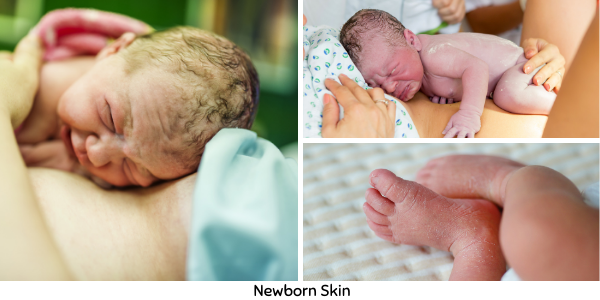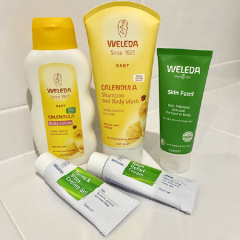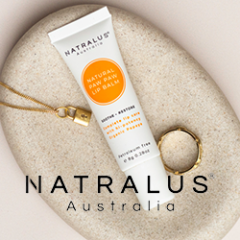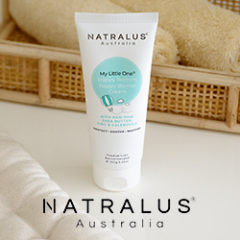Baby skin and Common Skin Conditions Health Suitable for stages: 0 - 3 Months, 3 - 6 Months, 6 - 12 Months
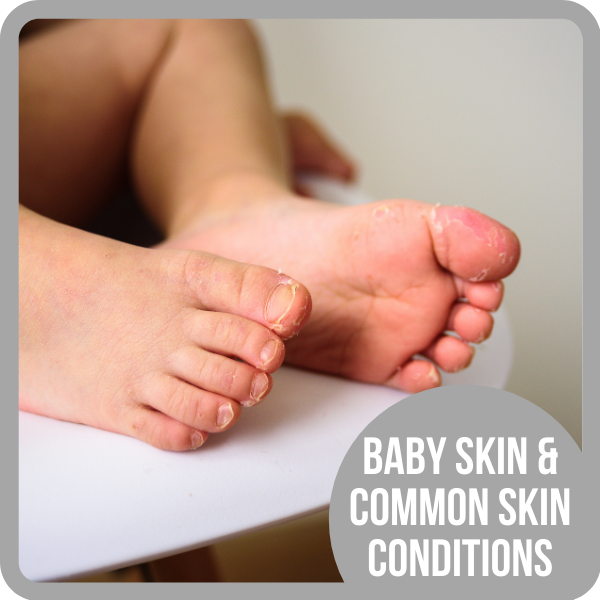

Babies are born after having spent roughly 40 weeks suspended in the fluid inside their mother’s body. Their skin is new and still developing in their first year. Naturally, their skin is different from an adult’s and requires special care.
What is the skin?
- The skin is the body's largest organ, forming the physical barrier between the body and the environment. It has 3 main layers: Epidermis, Dermis, and Subcutaneous tissue.
- It performs several important functions including protection from the sun's UV rays, preventing invasion from unwanted organisms, regulating body temperature, and perception of sensory feedback including touch (or pressure), temperature, vibration, texture, and pain.
- The skin has its own microbiome which is affected by antibacterial products and everything it comes into contact with.
What is different about baby skin?
- Newborns have very sensitive skin because it is not yet fully matured. It takes a year for the skin to mature in terms of functional and structural characteristics.
- At birth, the skin is covered with a layer of 'vernix' which looks white and feels waxy. The Vernix contributes to hydration, lower skin PH (around 6.3 - 7.5 pH), and reduced heat loss after birth.
- Over the first 30 days of life, the dryer, rougher skin of the newborn sheds, revealing smoother and more hydrated skin.
- The infant's skin pH is higher at between 6.34 - 7.5 pH than an adult’s skin, which is around 5 - 5.5 pH.
- Between 3 and 12 months, the baby's skin is much more hydrated than adult's skin. The high water content gives the skin a plump, soft feel that is irresistible to touch.
- Babies ability to regulate their temperature using their skin is still developing. They can’t shiver, but they can get goosebumps and create heat through using their fat stores to an extent. When they are hot, they can sweat; however, their sweat glands and skin are still underdeveloped. Sweat can easily get trapped in the pores leading to heat rash, especially if the baby is overdressed or over-wrapped.
For more in-depth information on baby's skin, see this journal article by Oranges, Dini, & Romanelli (2015).
What are the common skin problems for babies?
Due to the nature of the baby’s skin, hormones, and getting used to the outside world, your baby's skin can get bumpy, crusty, and rashy. You should check your baby’s skin regularly for any signs of skin changes.
Common skin conditions include cradle cap, milia, infant acne, eczema, nappy rash and heat rash.
Some conditions are easy to treat with a bit of know-how; others are more persistent. For example, infant acne and Milia appear in about half of newborn babies; it is harmless and heals spontaneously within the first weeks/month.
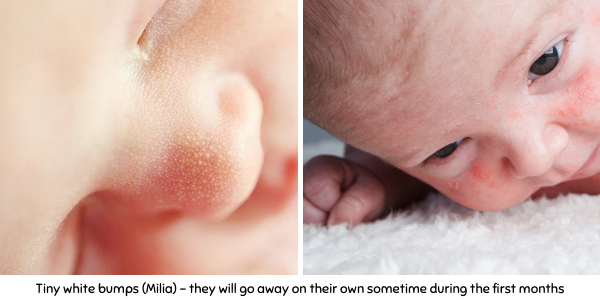
It is important to know when you might need to consult a health practitioner for diagnosis and treatment. With babies, there is no harm in seeking advice when you are ever unsure. Medical supervision, diagnosis, and treatment should be sought with any signs of infection (such as yeast infections) with red spots or green pustules, skin blisters or crusting or fever, and irritability.
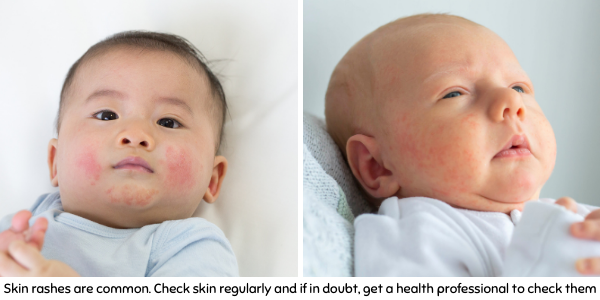
For more information on common skin conditions, check out the following links:

Cradle cap -Raising children’s network; Better Health Channel Victoria

Nappy rash - Raising children’s Network; Australasian College of Dermatologists

Eczema - Better Health Channel Victoria; Raising children’s network; Australasian College of Dermatologists
Why are babies so prone to rashes such as nappy rash?
Some reasons:
- The development of the skin itself - Baby’s skin is more fragile due to a thin oil layer that protects the skin and thinner skin barrier.
- Frequency of the inputs and outputs - Babies' stomachs are tiny and require frequent milk feeds or 'inputs'. This results in frequent urination and bowel movements or 'outputs'. It is not unusual for newborns to need anywhere up to 12 to as little as 4 nappy changes per day (a big range!), but the average is considered 8-12 in the beginning. This decreases over time until they start to use the toilet. If your baby urinates often, this is a sign of enough fluid intake, which is a good thing. But urine changes the skin's pH level and creates the perfect environment for bacterial and fungal growth. Newborns may have bowel movements anywhere from 3 to 12 times per day, over time, this can decrease to as little as once every few days or even weekly. The faeces can irritate the skin, especially if left to stick to the skin.
- The warm, high moisture environment - Within a warm and moist environment such as within the nappy or on the chin of a teething, drooling baby, this creates the perfect environment for bacterial and fungal growth.
Now that you understand a bit about your baby's skin, the next question is what you can do to help them to be comfortable and to support their skin's development. Check out the related topic How and Where to Care for Nappy Area Skin & How and where to bath your baby.
Please note: Above all, any information on this website aims to provide general ideas for informational and educational purposes only. We encourage users to investigate several information sources, including, where necessary, independent individualised medical advice before making any decisions that could affect you or your child’s health or wellbeing.
* BabyPeg participates in various affiliate programs and may earn a commission for referring our users through the links provided. This is at no additional cost to our users. We take great care in choosing products and services which align with the mission of promoting better health and wellness for our BabyPeg community. Where possible, products are tried and tested by us. To continue to provide BabyPeg as a free service and reach as many parents as possible, we appreciate your support in using the link provided to purchase if you decide the product is right for you.
